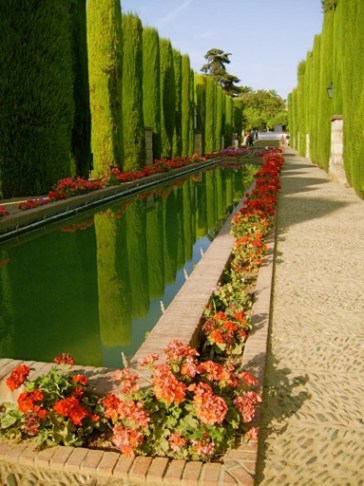 An Alcazar (castle) is a Spanish word deriving from the Arabic 'al
An Alcazar (castle) is a Spanish word deriving from the Arabic 'alquasar', meaning fortress or palace.
Spain has some truly magnificent examples of castle architecture - however, true alcazars are something a little different. Alcazars tend to be inspired by Moorish architecture, and were often built upon the remnants of 13th century Moorish fortresses.
These Alcazars originated from the time when Spain was occupied by Moors from North Africa - the period from around 711-1492.
There are some extremely famous examples of Alcazar castle in Spain. The Alcazar of Segovia is undoubtedly the most famous alcazar castle, as the fairytale turrets allegedly inspired the design of Disney themepark castles.
In addition, the Alcazar of Seville is one of Seville's most noted tourist attractions. The alcazar is a beautiful, extensive complex, and a part-time residence of the Spanish royal family.
The Alcazar of Cordoba is less well-known but no less beautiful than the others. The alcazar was a home to the Spanish Inquisition, and was a favourite residence of King Ferdinand and Queen Isabella.
The Alcazar of Cordoba: once home to the Spanish Inquisition
Tourists often overlook Alcazar of Cordoba. That’s because it’s somewhat eclipsed by the big-name tourist attraction in Cordoba – the mighty Mesquita.The Mesquita is staggering building – a Moorish mosque converted into a Christian cathedral, and quite unlike anything you’ll see anywhere else in the world.
Although the Alcazar castle isn’t in the same league as its nearby rival, and isn’t quite as magic as its siblings in Seville or Segovia, it’s certainly worth a visit – particularly for its outstanding gardens.
The foundations for the Cordoba Alcazar were laid in Roman times – but it was the Moors who made the fortress the site it is today. In the 12th and 13th centuries, they dramatically enlarged the old fortress, adding the beautiful Caliph baths and adorning so many of the rooms with beautiful tile-work and plastering.
In 1236, however, the Spanish Christians ‘reconquered’ Cordoba, seizing it from the Moors. King Ferdinand III took hold of the Alcazar and made it his permanent residence.
Other kings and members of the Spanish nobility lived in the Alcazar castle over the years, and the castle was a site of fervent plotting, while the Spanish Christian monarchs tried to figure out a way to recapture Granada – the last stronghold of the Moors. In 1492, they finally succeeded – and expelled the Muslims from the country.












